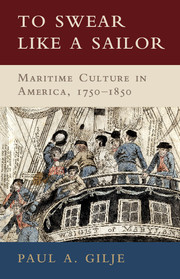Book contents
- Frontmatter
- Dedication
- Contents
- List of Illustrations
- Acknowledgments
- List of Abbreviations
- Introduction
- 1 To Swear Like a Sailor
- 2 The Language of Jack Tar
- 3 The Logbook of Memory
- 4 Spinning Yarns
- 5 Songs of the Sailorman
- 6 The Pirates Own Book
- 7 Tar-Stained Images
- Epilogue: The Sea Chest
- Appendix: A Note on Logbooks and Journals Kept at Sea
- Notes
- Bibliography of Primary Sources
- Index
4 - Spinning Yarns
Published online by Cambridge University Press: 05 February 2016
- Frontmatter
- Dedication
- Contents
- List of Illustrations
- Acknowledgments
- List of Abbreviations
- Introduction
- 1 To Swear Like a Sailor
- 2 The Language of Jack Tar
- 3 The Logbook of Memory
- 4 Spinning Yarns
- 5 Songs of the Sailorman
- 6 The Pirates Own Book
- 7 Tar-Stained Images
- Epilogue: The Sea Chest
- Appendix: A Note on Logbooks and Journals Kept at Sea
- Notes
- Bibliography of Primary Sources
- Index
Summary
Sailors really did spin yarns. Storytelling was an important art form for seamen who took great pride in their ability to weave together an elaborate tale in the quiet moments of a watch late at night or within the confines of the forecastle. Many a sailor would then repeat these stories on shore in taverns to anyone who would listen or in more domestic settings among family and friends. Unlike the logbook, the yarn did not have to accurately represent the truth. The whole point of a yarn was to sail along the borders of the factual and the fanciful. Like the language of Jack Tar itself, spinning yarns was an oral art form largely lost to historians dependent on the written word. But also like the sailor's special lexicon – and yarns contain more than their share of nauticalisms – we can gain some idea of the content of yarns from sailors who recorded such stories in their personal journals or in the great wave of books by common seamen that appeared in the first half of the nineteenth century. How and why those tales became recorded as spinning yarns is a yarn unto itself.
Tracing the history of the phrase “spinning yarns” demonstrates an odd give and take between maritime and mainstream sources. There can be little doubt that sailors created the metaphor “spinning yarns” for their storytelling, but the actual phrase seeped into print in the autobiography of a British criminal. Whatever the first published appearance of the phrase, it quickly became applied largely to the world of Jack Tar. Even if the authors who first wrote about old salts spinning yarns were British and did so for notions born out of the nationalism and the Romanticism of the early nineteenth century, and even if many of them had little deepwater experience, the phrase soon appeared in the United States and returned to its maritime spawning ground, developing an even more special meaning for seamen. In the 1830s sailors began to use the phrase “spinning yarns” in their own published narratives and to mention it in private manuscripts. By the 1840s Jack Tar's art of the yarn appeared in two vastly contrasting types of literature represented by Ned Buntline and Herman Melville.
- Type
- Chapter
- Information
- To Swear like a SailorMaritime Culture in America, 1750–1850, pp. 106 - 133Publisher: Cambridge University PressPrint publication year: 2016



